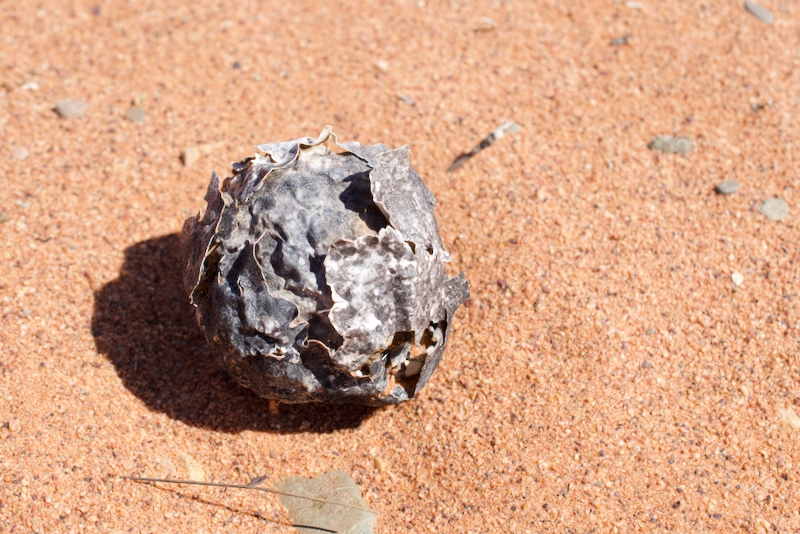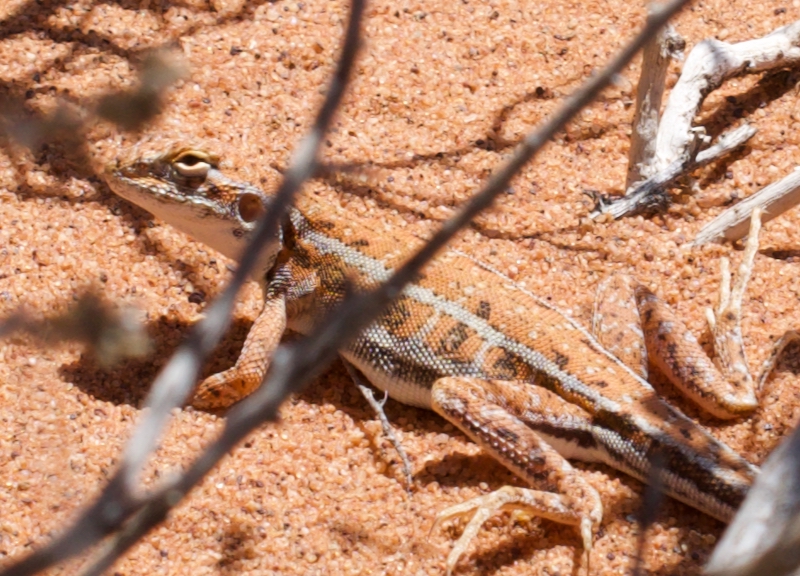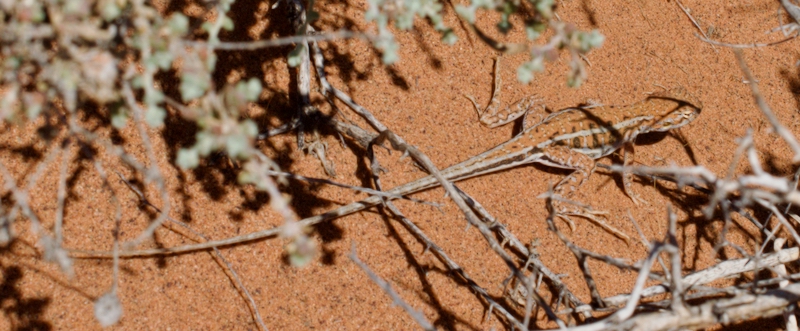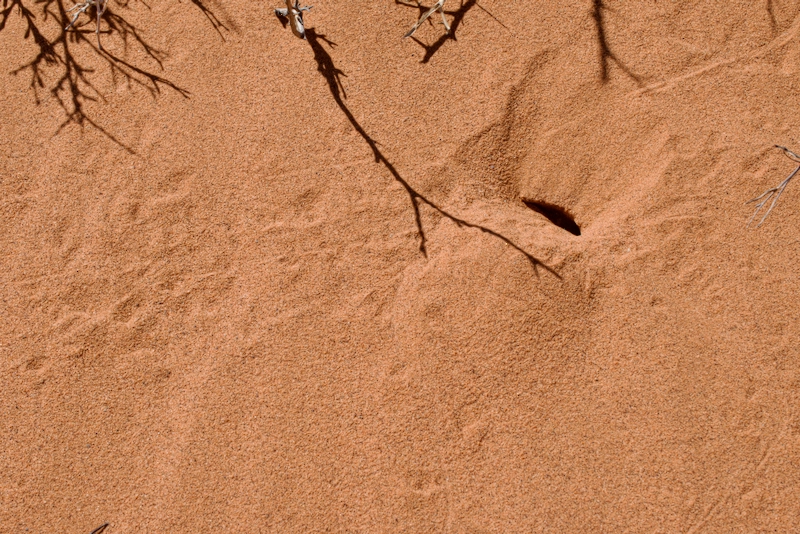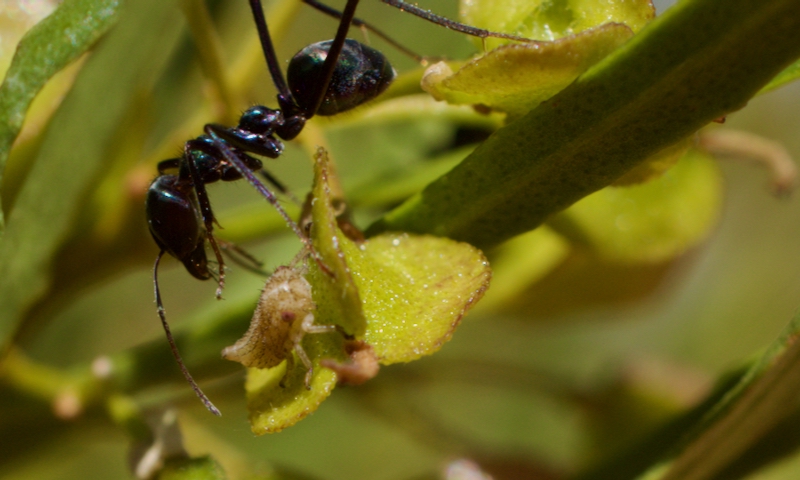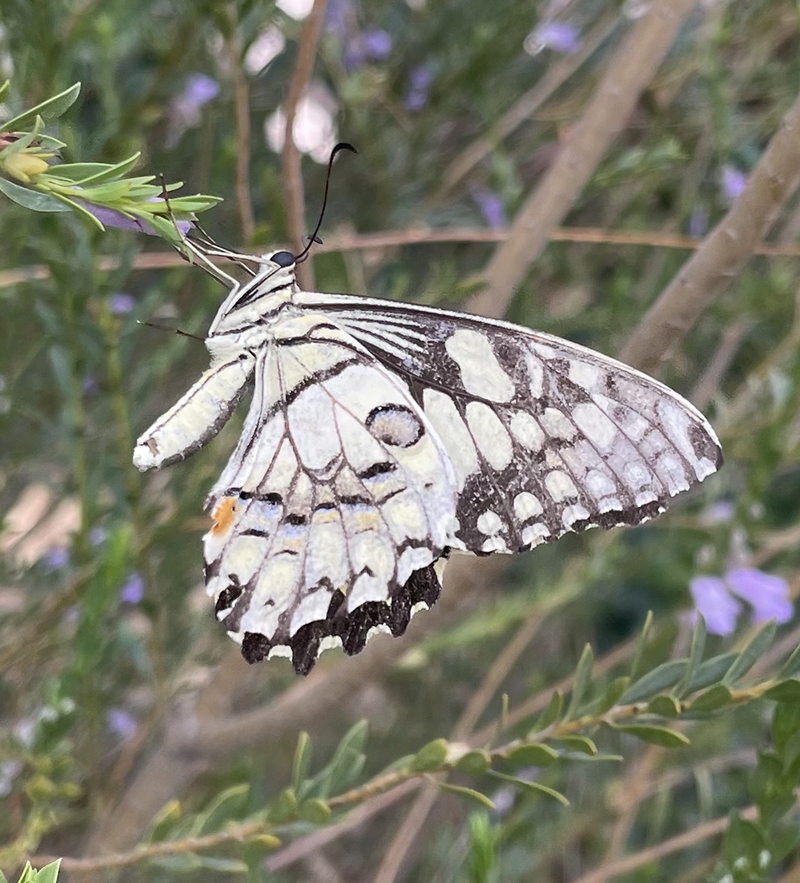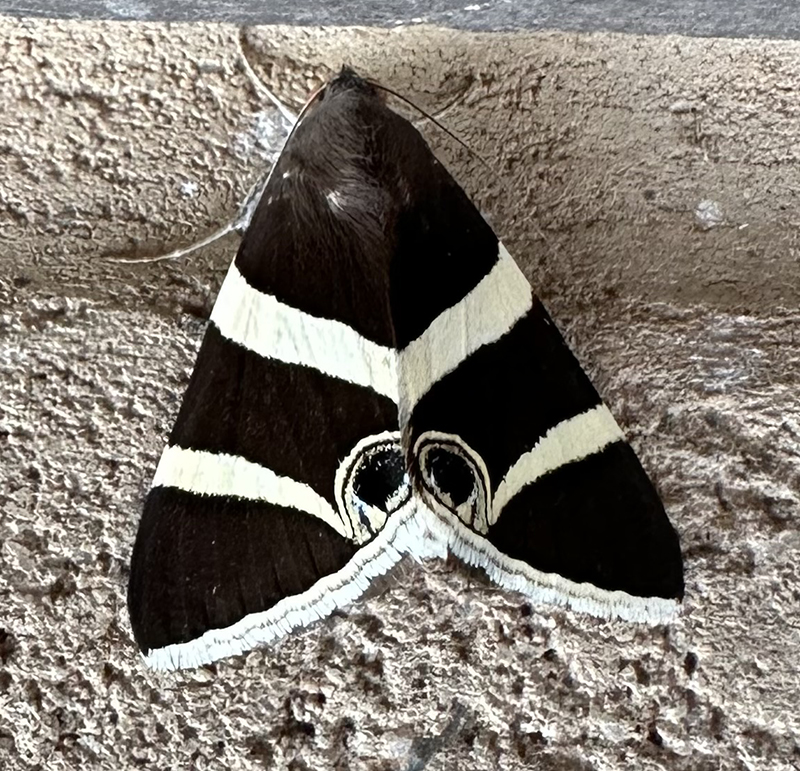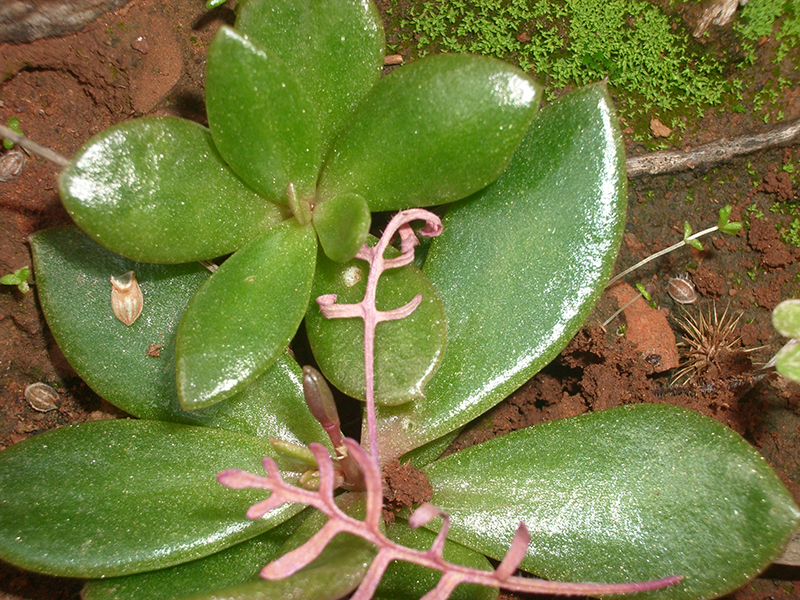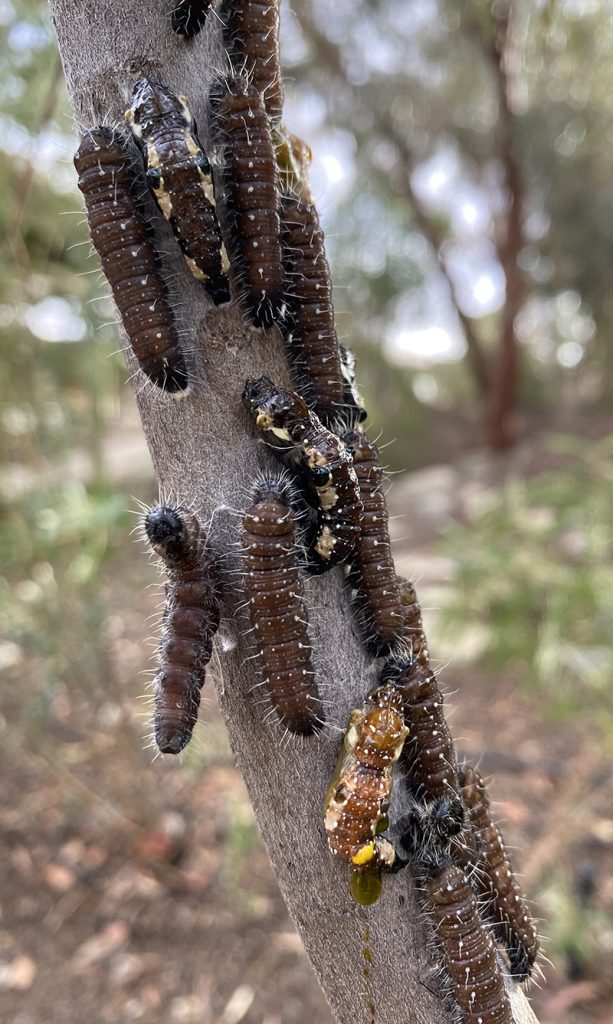Also commonly known as Paddy Melon, Camel Melon (Citrullus amarus) was introduced to South Australia with camels in the 19th century. Though related to squash, gourds and melons, Camel Melon is not generally eaten. The fruit (approximately 8cm wide), dries into a resilient seed casing, leading to a proliferation of this plant in various harsh outback conditions, including sand dunes.
